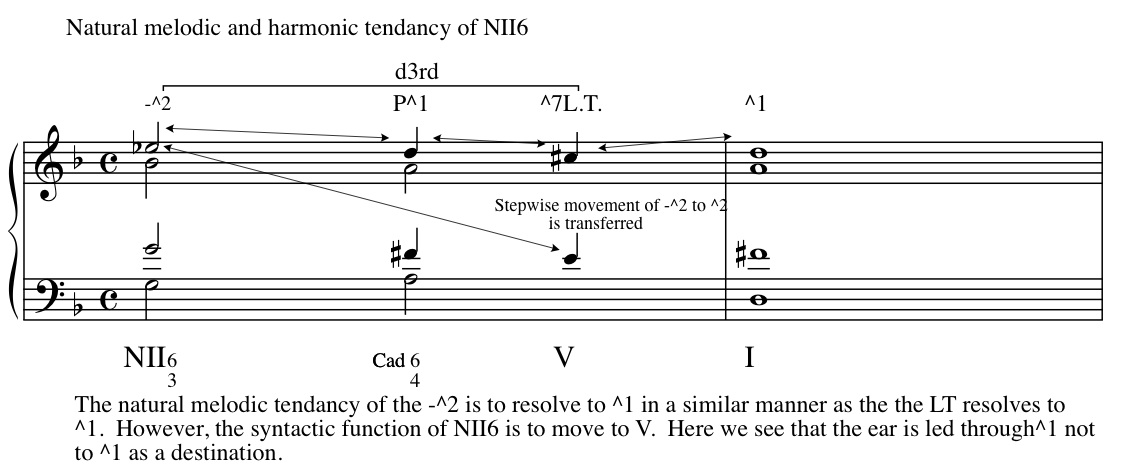Homework: Workbook Chapter 28
Preliminaries a-i and K
Longer Assignments 1, 2
Study & Analysis #3, 4,5
or
Textbook Chapter 28 Preliminaries 1 a-j
Write 16 bars incorporating at least 2 usages of textbook preliminaries 1a-j
above.
Workbook Study & Analysis #2 and #6 & #7
A Chord Leading to V
1. The Phrygian II
a. We have seen that in certain circumstances, especially in minor, the
II chord (which possesses a tritone in minor) can be harsh. In fact
tritone of the II chord in minor can be so troublesome that we have
gone out of our way to avoid the root position II5 in minor and instead
have opted for II6
b. In certain circumstances, composers have sought other ways to avoid
the harsh if not meager sound of the II5 in minor. One solution is to
lower the root of the II5 from ^2 to -^2
c. In minor, the II5 with a -^2 is called the Phrygian II. Its name
stems from the mode of the same name in which the II chord lies a half
step above the I chord and naturally occurs as a Major triad.
d. Whereas the bII5 is a more accomodating to the ear than naturally
occuring II5, voice leading considerations most often yield bII in 63
position.
NOTE: The bII6 is as frequently referred to as the Phrygian II6 as it
is the Neapolitan II6 Infact, sometimes people will simply refer to the
bII6 as the Phrygian II or the Neapolitan II. You should recognize both
as being the bII in 63 position. Sometimes people will use the
abbreviation N6 instead of a roman numeral. H&VL is against such
identification stating that such an identification robs the chord of
its II function. I happen to think that the bII6 is a bit more
independent of its link to the traditional II chord than H&VL. As
well, you know I do not like using b designations in such cases as its
misleading to the real function of the chord. (consider the key of B
minor: the lowered II is a Cnatural so why call it a "b" anything? )As
such I will often refer to the bII6 as NII6. The N will indicate that
it is build on a -^2, the II means its obviously a II chord of some
sort, and the 6 indicates that it appears in 63 position. This
nomenclature will give us greater flexability in the future should we
decide we want to alter the chord further.
2. Harmonic and melodic functions
a. Like the II6, NII6 tends to move to V or V7.
b. Since the -^2 is non diatonic, placing it in the soprano creates a very visible chromatic motion with great intensity
c. NII6 also may pass to V like chords and chords applied to the
dominant (vii║7 (inv), vii°7 (inv), Cad64, and V(7 inv)>V and vii║/°
7(inv)>V
d. Of great importance is the motion of -^2. Notice it is 1/2 step from
the tonic. Just like the leading tone, ^2 is highly active towards ^1.
However, the syntactic function of the NII6 necessitates its movement
towards V as it, in and of itself, is not a cadential harmony.
e. As such, the -^2 tends to move not to I directly but to some other
tone. This creates somewhat of a contradiction between the melodic and
harmonic tendancy of the NII6 and creates a very dramatic effect
especially when the -^2 is very prominant.
3. Voice Leading
a. Since the -^2 is extremely active and nondiatonic we can consider it
dissonant to diatonic harmony in general. As such we look to the -^2 to
resolve down.
b. Since the melodic tendancy of the -^2 is to resolve to ^1, an
examination of the voice leading in the progression NII6-Cad64-V will
yield an insightful perspective to the melodic and harmonic connection
behind the NII6

|